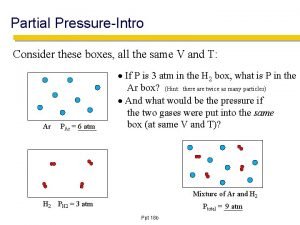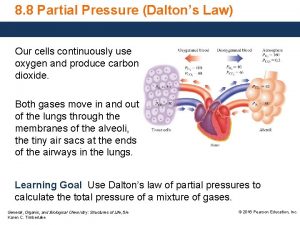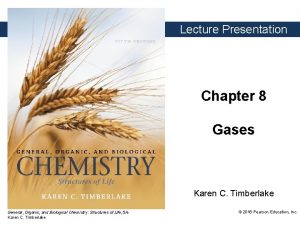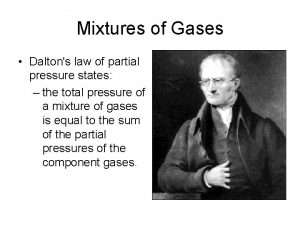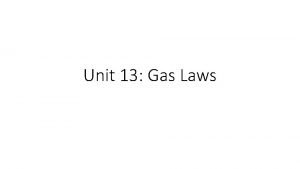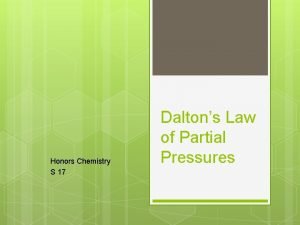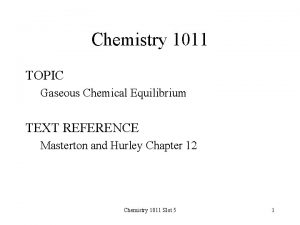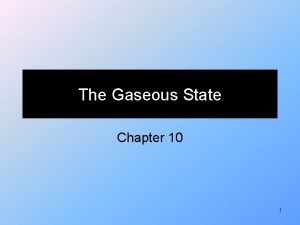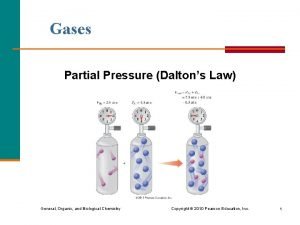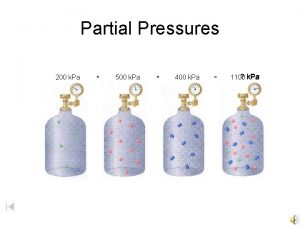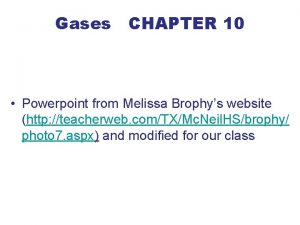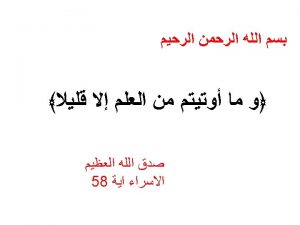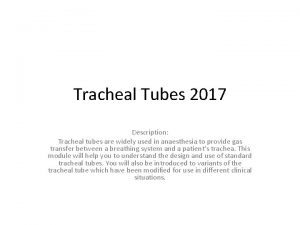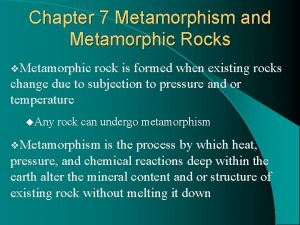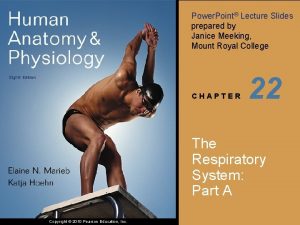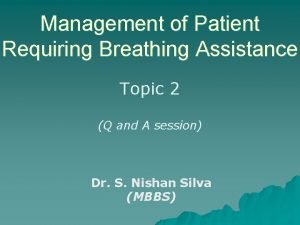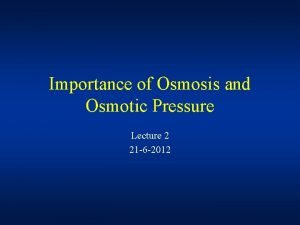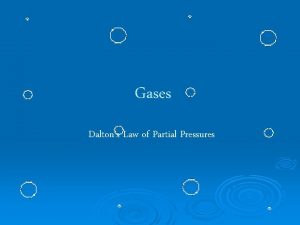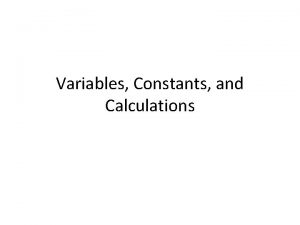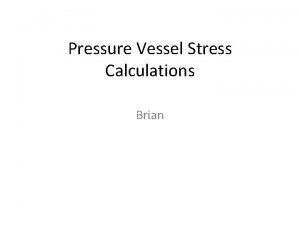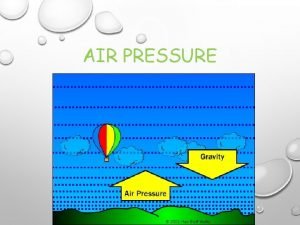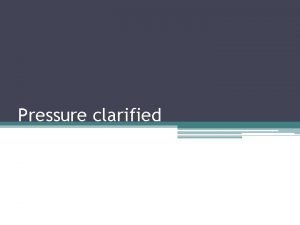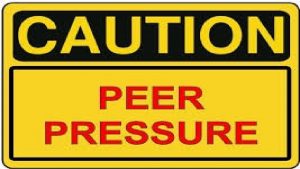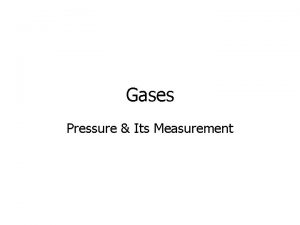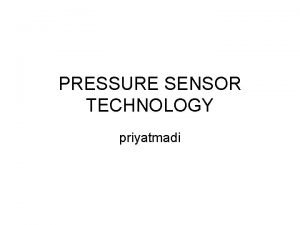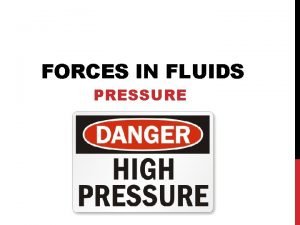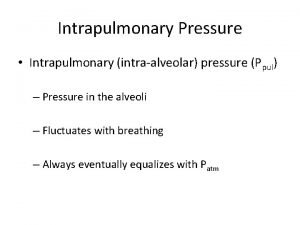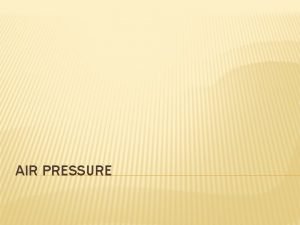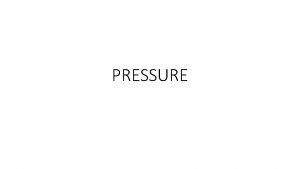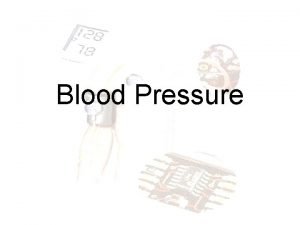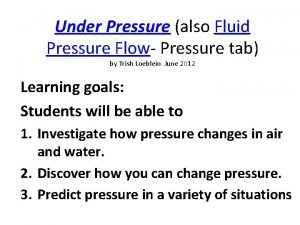N33 Partial Pressure Calculations N33 Partial Pressure Calculations



























- Slides: 27

N-33 Partial Pressure Calculations

N-33 Partial Pressure Calculations Target: I can use Dalton’s Law of Partial Pressures to determine how much an individual gas is contributing to the pressure of a mixture of gases.

Dalton’s Law

Dalton’s Law • We assume • Total pressure exerted that the by a mixture of gases to not is the same as the sum react with of all partial pressures. each other!

Partial Pressures 200 k. Pa + 500 k. Pa + 400 k. Pa = 1100 k. Pa ? k. Pa

Dalton’s Law of Partial Pressures & Air Pressure 590 mm Hg PTotal = PO PTotal 149 mm Hg PO 2 2 + PN 2 + PCO 2 + PAr PN 2 3 mm Hg P CO 2 = 149 + 590 + 3 + 8 mm Hg PTotal = 750 mm Hg 8 mm Hg P Ar EARTH

Type of Gas Doesn’t Matter Same T, same V, same # moles… SAME PRESSURE!

You can use mole fractions to find partial pressures! In a gaseous mixture, a gas’s partial pressure is the one the gas would exert if it were by itself in the container. The mole fraction in a mixture of gases determines each gas’s partial pressure.

Mole Fractions

Partial Pressure

Total pressure of mixture (3. 0 mol He and 4. 0 mol Ne) is 97. 4 k. Pa. Find partial pressure of each gas PHe = 3 mol ? He (97. 4 k. Pa) = 7 mol gas 41. 7 k. Pa PNe 4 mol Ne ? = (97. 4 k. Pa) = 7 mol gas 55. 7 k. Pa

Add in some molar conversions! 80. 0 g each of He, Ne, and Ar are in a container. The total pressure is 780 mm Hg. Find each gas’s partial pressure. XHe = 20/26 of total Total: 26 mol gas XNe = 4/26 of total XAr = 2/26 of total x 780 mm. Hg

Combine Partial Pressure and Boyle’s Law! Gets hard to keep track of starting and ending values because there are so many! Charts are your friend!!!!

Two 1. 0 L containers, A and B, contain gases under 2. 0 and 4. 0 atm, respectively. Both gases are forced into Container C (w/vol. 2. 0 L). Find total pres. of mixture in C. P 1 AV 1 A = P 2 CAV 2 CA 2. 0 atm (1. 0 L) = P 2 CA (2. 0 L) B A P 2 CA = 1. 0 atm C P 1 BV 1 B = P 2 CBV 2 CB A B P 1 V 1 2. 0 atm 1. 0 L 4. 0 atm 1. 0 L V 2 C 2. 0 L P 2 C 1. 0 atm 2. 0 atm P 2 CTotal = 3. 0 atm 4. 0 atm (1. 0 L) = P 2 CB (2. 0 L) P 2 CB = 2. 0 atm Now do a partial pressure problem and add up your two partial pressures to find total pressure!

Find total pressure of mixture in Container D. P 1 AV 1 A = P 2 DAV 2 DA 3. 2 atm (1. 3 L) = P 2 DA(2. 3 L) P 2 DA = 1. 8 atm A B 1. 3 L 3. 2 atm A B C C 2. 6 L 1. 4 atm P 1 V 1 3. 2 atm 1. 3 L 1. 4 atm 2. 6 L 2. 7 atm 3. 8 L 2. 7 atm V 2 D D 2. 3 L X atm P 2 D 1. 8 atm 2. 3 L 1. 6 atm 4. 5 atm P 2 DTotal = 7. 9 atm P 1 BV 1 B = P 2 DBV 2 DB 1. 4 atm (2. 6 L) = P 2 DB(2. 3 L) P 2 DB = 1. 6 atm P 1 CV 1 C = P 2 DCV 2 DC 2. 7 atm (3. 8 L) = P 2 DC (2. 3 L) P 2 DC = 4. 5 atm

Collecting Gas Over Water via Displacement

Collecting Gas Over Water via Displacement

Collecting Gas Over Water via Displacement

Collecting Gas Over Water via Displacement The gas being created will push the water out of the collection container and “displace” it – allows you to find the volume collected. The total pressure in the collection container is the same as atmospheric pressure in the room.

If you line up the water level line of the collection container, with the water level line of the water bath, then the pressure inside the collection container will be the SAME as the pressure in the room! Water lines don’t match, pressure inside not the same as pressure outside! Water lines match, pressure inside is the same as pressure outside!

Water vapor is a bit of a problem though… The collected gas will have water vapor in it as well. The amount of water vapor will change based on the temperature.

“Wet Gas” versus “Dry Gas”

“Wet Gas” versus “Dry Gas”

Table of Partial Pressures of Water You can find a “Water Vapor Pressure Chart” on your R-36 Reference Sheet

Example #1 Hydrogen gas is collected over water at 22°C. Find the pressure of the dry gas if the atmospheric pressure is 708 mm. Hg. Remember: The total pressure in the collection bottle is equal to atmospheric pressure and is a mixture of H 2 and water vapor. GIVEN: WORK: P H 2 = ? Ptotal = PH 2 + PH 2 O Ptotal = 708 mm. Hg = PH + 19. 8 mm. Hg 2 PH 2 O = 19. 8 mm. Hg P = 688. 2 mm. Hg H 2 Look up water-vapor pressure on chart for 22°C.

Example #2 A gas is collected over water at a temp of 35°C while the barometric pressure is 0. 976 atm. What is the partial pressure of the dry gas? Remember: The total P in the collection bottle is equal to barometric pressure and is a mixture of collection gas and water vapor. GIVEN: WORK: Pgas = ? Ptotal = Pgas + PH 2 O Ptotal = 0. 976 atm = Pgas + 0. 0555 atm PH 2 O = 42. 2 mm. Hg P = 0. 921 atm gas = 0. 0555 atm Make sure your units match!!!

You. Tube Link to Presentation • https: //youtu. be/LIDrc. Bu. Aaf. M
 How to find partial pressure from total pressure
How to find partial pressure from total pressure How to find partical pressure
How to find partical pressure Types of connections in steel structures
Types of connections in steel structures Karen 2
Karen 2 Finding partial pressure
Finding partial pressure Graham's law real life example
Graham's law real life example Dalton's law of partial pressure
Dalton's law of partial pressure How to find partial pressure at equilibrium
How to find partial pressure at equilibrium Charles law
Charles law Gibbs free energy with partial pressure
Gibbs free energy with partial pressure Dalton's law of partial pressure
Dalton's law of partial pressure Partial pressure of a gas
Partial pressure of a gas Partial vapour pressure
Partial vapour pressure How to find partical pressure
How to find partical pressure Unit of universal gas constant
Unit of universal gas constant Oncotic vs hydrostatic pressure
Oncotic vs hydrostatic pressure Continuous bedside pressure mapping
Continuous bedside pressure mapping High pressure and low pressure
High pressure and low pressure Metamorphism
Metamorphism Regional metamorphism
Regional metamorphism Impermeance
Impermeance Intrapulmonary pressure
Intrapulmonary pressure Short note on regulation of blood pressure
Short note on regulation of blood pressure Low atmospheric pressure
Low atmospheric pressure Pressure support vs pressure control
Pressure support vs pressure control Insall salvati ratio
Insall salvati ratio Hydrostatic pressure vs osmotic pressure
Hydrostatic pressure vs osmotic pressure Describing edema
Describing edema
